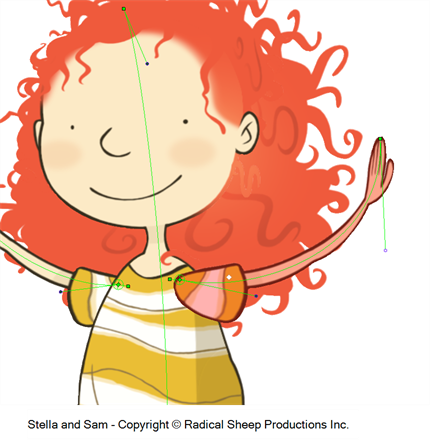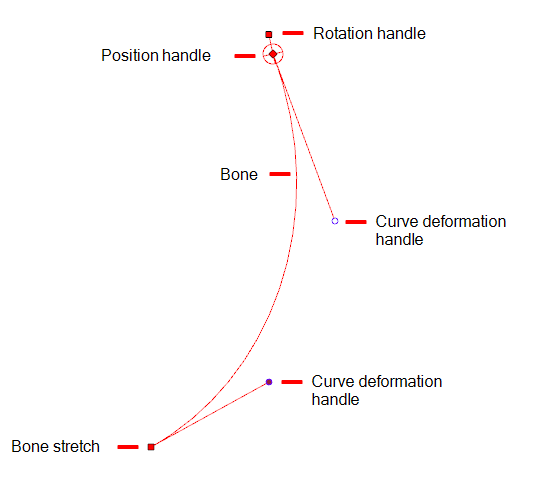About the Deformation Effect
The Deformation effect can be used to animate bitmap or vector-based graphics – it even works on gradients and textures. The Deformation effect acts as a skeleton in which you can maneuver different articulations or bend it into a fluid curve. It can be useful in many situations including cut-out animation. When paired with your creativity, the Deformation effect can produce some stunning results.
The Deform group will be created automatically when using the Rigging tool. However if you want to create a Deform manually, all the modules can be accessed from the Deformation tab in the Module Library—see Deformer Effects.
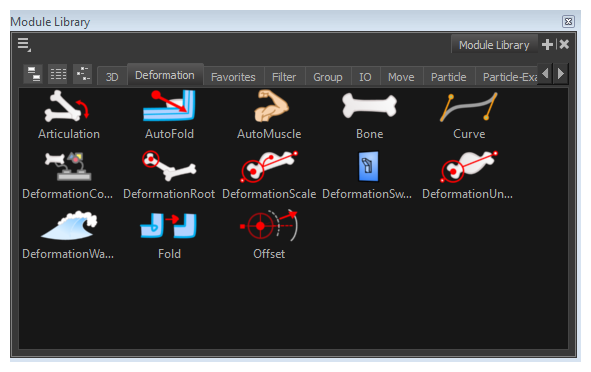
Main Types of Deformer
There are two main types of deformer:
| • | Bone Deformer |
| • | Curve Deformer |
Bone Deformer
The Bone Deformer allows you to create a basic or advanced skeleton structure in which the parent deformer will move the child deformers. The Bone Deformer is mostly used when animating the extremities of a character, such as the arms or legs, adding fluidity and a natural feel to the animation. The Bone effect can be manipulated to rotate a limb at an articulation joint and to shorten or elongate the extremities of a limb. Every Bone module within a skeleton chain is linked by an Articulation module. It is also quite useful to bend the torso.
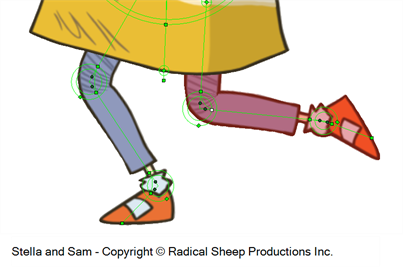
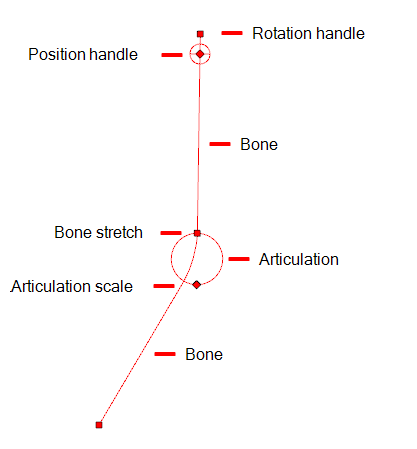
Curve Deformer
The Curve Deformer has a hierarchy similar to that of the Bone Deformer and provides you with complete flexibility. For example, when editing curves, you can deform a straight line into an arc or a zigzag with only a few clicks. Curve Deformers are mostly used to animate elements that do not have joints, such as hair or facial features. However, in some cases they can be used to animate limbs to create a specific animation genre, similar to the early rubber hose style of animation with typically simple, flowing curves without articulation (no hinged wrists or elbows).
